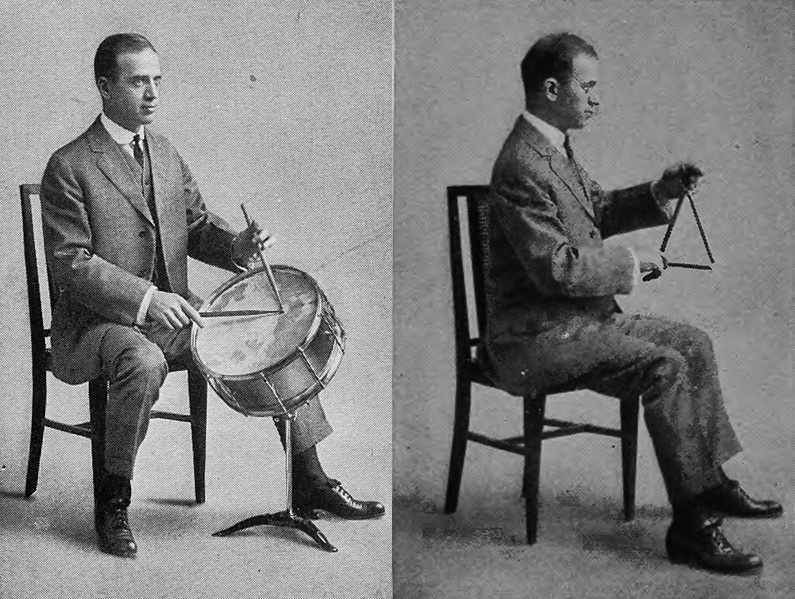Task: In this project, the task is to combine two untuned instruments in a series of four duet studies. Each study should be at least eight bars long. The first two should explore an interesting ‘conversation’ or rhythmic discussion between two percussion instruments of your choice.
1. Duet for Castanets and Tambourine
This is the first of the two pieces for this project that deals with a “conversation” between the instruments. This first piece is perhaps the more obvious example of this as the two main rhythmic theme are very clearly passed on from one instrument on the next. The length of the theme allowed for some interesting overlaps when displaced by an eighth-note to create an interesting displacement.
2. Duet for Triangle and Snare

This is the first of two pieces written in odd-meters. I have personally performed a number of pieces in odd meters, but it has always been in a setting that has been driven by a rhythmic backbeat, whereby the subdivisions within the bar are clearly grouped and understood (for example 2+3 in 5/8 time, or 2+2+3 in 7/8 time). Initially it was strange to approach this without falling into these grouping patterns of having a pulse where the time was felt intuitively by the listener.
When I look at the score below, I am not completely satisfied with this short piece. I feel like there’s nothing about it that feels coherent, however the sound output seems interesting. The instruments have room to breathe and to feature in their own ways, and I like the pick-up 16th note that ends most bars into the theme that follows. It feels unexpected and betrays any semblance of time that may be discerned from what came before.
3. Duet for Finger Cymbals and Woodblock

Although very short, I like the style of this piece. I will be the first to point out that finger cymbals might not be the most suitable instrument for this, in hindsight I would use a triangle to be able to achieve the fast articulations written for that part. However, it was meant to be a piece for a metal/wood percussion combination, so this could be up for interpretation depending on availability. Like many of the other short pieces I’ve posted, this makes use of triplets to interrupt the time flow at the end of phrases. I think I’ve used this resource enough and it might be time to try other ways of incorporating odd note groupings.
4. Duet for Crash Cymbal and Bass Drum

I think I’m most satisfied with how the piece below turned out. I had the idea of doing a piece that was slightly longer for this instrument combination, which utilized some new notation I hadn’t used before, and which had an unexpected switch in mood.
My initial sketch for this piece was meant to revolve around the pattern of 3+3+2, which I assigned to the bass drum at the start. This idea doesn’t fully develop, as from bar 5 there’s a drastic change in tempo. I wanted to have the idea of tempo be ambiguous in this section by including tuplets in the crash cymbal that speed up and slow down the perceived beat, even if the accompanying bass drum is quite straight forward. The 3+3+2 grouping appears again in the bass drum but this time using 16th notes as the dividing unit.




